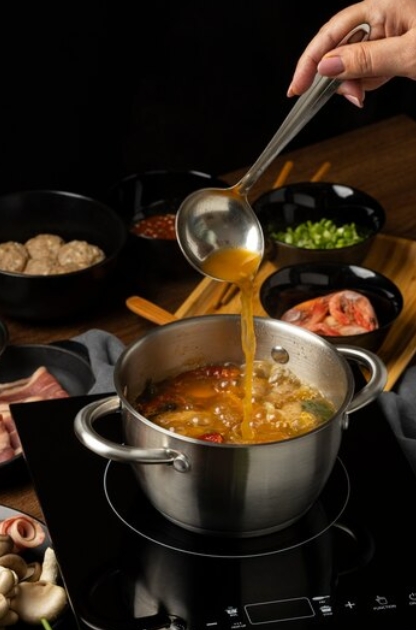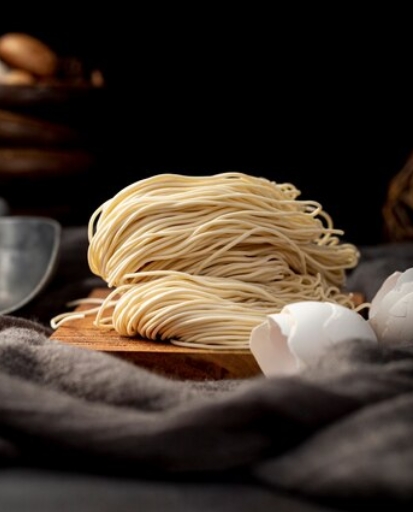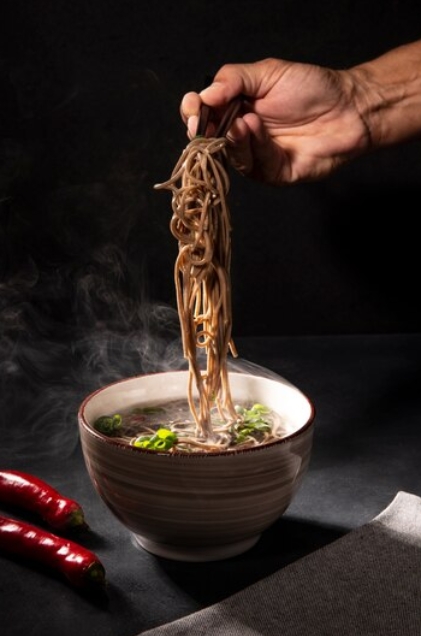Note
- For a richer broth, simmer with chicken bones or pork for 2 hours instead of 30 minutes.
- Customize the spice level by adjusting chili oil or adding fresh chili slices.
- Fresh noodles work best, but dried can be substituted for convenience.
Journey of Ramen
The history of the popular dish ramen, which is renowned for its flavorful broth, chewy noodles, and variety of toppings, is intriguing and crosses ages and countries. The history of ramen is as intricate and multi-layered as the dish itself, having evolved from its modest origins as a straightforward noodle soup to becoming a worldwide sensation.
The Origins of Ramen
Although ramen is now commonly associated with Japanese food, its roots are in China. Chinese immigrants brought wheat-based noodles in a basic broth to Japan in the 19th century. To differentiate it from Japanese buckwheat noodles, the dish was once called "shina soba" (Chinese soba). Although these early iterations were simple, they set the stage for the dish's further development.
Ramen began to become popular in Japan during the early 20th century, especially in port areas with a significant Chinese population, such Yokohama. Dock workers and laborers would purchase hot bowls of noodles from vendors, providing a cheap and satisfying meal. The development of ramen as a uniquely Japanese cuisine began around this time.
Ramen During Post-War Japan
Japan experienced food shortages following World War II, but the introduction of American wheat and the accessibility of soy sauce made the ideal environment for ramen's growth. Ramen was served to hungry inhabitants by street vendors, who frequently had portable burners, offering solace and nourishment during trying times. During this time, ramen came to represent coziness, sustenance, and fortitude.
Ramen evolved from a street meal to a gourmet art as Japan's economy improved. Local flavors and ingredients were reflected in the emergence of regional variants. These variations demonstrated the dish's versatility, ranging from Tokyo's soy-based shoyu ramen to Kyushu's rich, creamy tonkotsu ramen.
The Significance of Ramen Ingredients
Each bowl of ramen is a harmonious blend of thoughtfully selected ingredients. The heart of the dish is the broth, which is frequently simmered for hours. The flavor is defined by the depth and complexity of the broth, regardless of whether it is made with vegetables, chicken, or pork bones.
Another essential ingredient is noodles, which are typically prepared with wheat flour, water, and kansui, an alkaline mineral water. They must be chewy and have a certain texture to withstand the heat and flavor of the soup.
Layers of flavor and texture are added by toppings like nori, sliced pork, soft-boiled eggs, and fresh veggies. Since no two bowls of ramen are ever the same, they also showcase the chef's inventiveness.
Ramen’s Modern Global Appeal
Ramen is become a worldwide culinary sensation, having surpassed its beginnings. Momofuku Ando's 1958 invention of instant ramen completely changed how people ate this dish. Instant ramen became a mainstay for busy professionals, students, and anybody else looking for a quick, filling lunch because it was inexpensive, simple to make, and widely accessible.
Gourmet versions of the classic dish are available at the ramen cafes that have cropped up all over the world in recent decades. These restaurants elevate ramen to a fine dining experience by emphasizing homemade noodles, slow-simmered broths, and unusual toppings.
The popularity of ramen has also been influenced by pop culture. The dish has become an iconic representation of Japanese culture, from food bloggers documenting their ramen adventures to anime characters slurping noodles.
Fun Facts About Ramen
- The word "ramen" is believed to come from the Chinese words "la mian," meaning hand-pulled noodles.
- There’s a ramen museum in Yokohama, Japan, dedicated to the history and artistry of the dish.
- Japan celebrates a "Ramen Day" on July 11, recognizing its cultural significance.
Why Ramen Resonates
The longevity of ramen's appeal is attributed to its versatility. This dish has the potential to be both modest and ostentatious, classic and inventive. The universal comfort and warmth of ramen unites people, whether they are enjoying a basic bowl at home or indulging in a gourmet version at a posh restaurant.
I appreciate you taking the time to read about the history of ramen. This trip not only shows how a meal has changed throughout time, but it also honors the inventiveness and tenacity of the civilizations that have embraced and enhanced it. Take a slurp and relish your own ramen!






